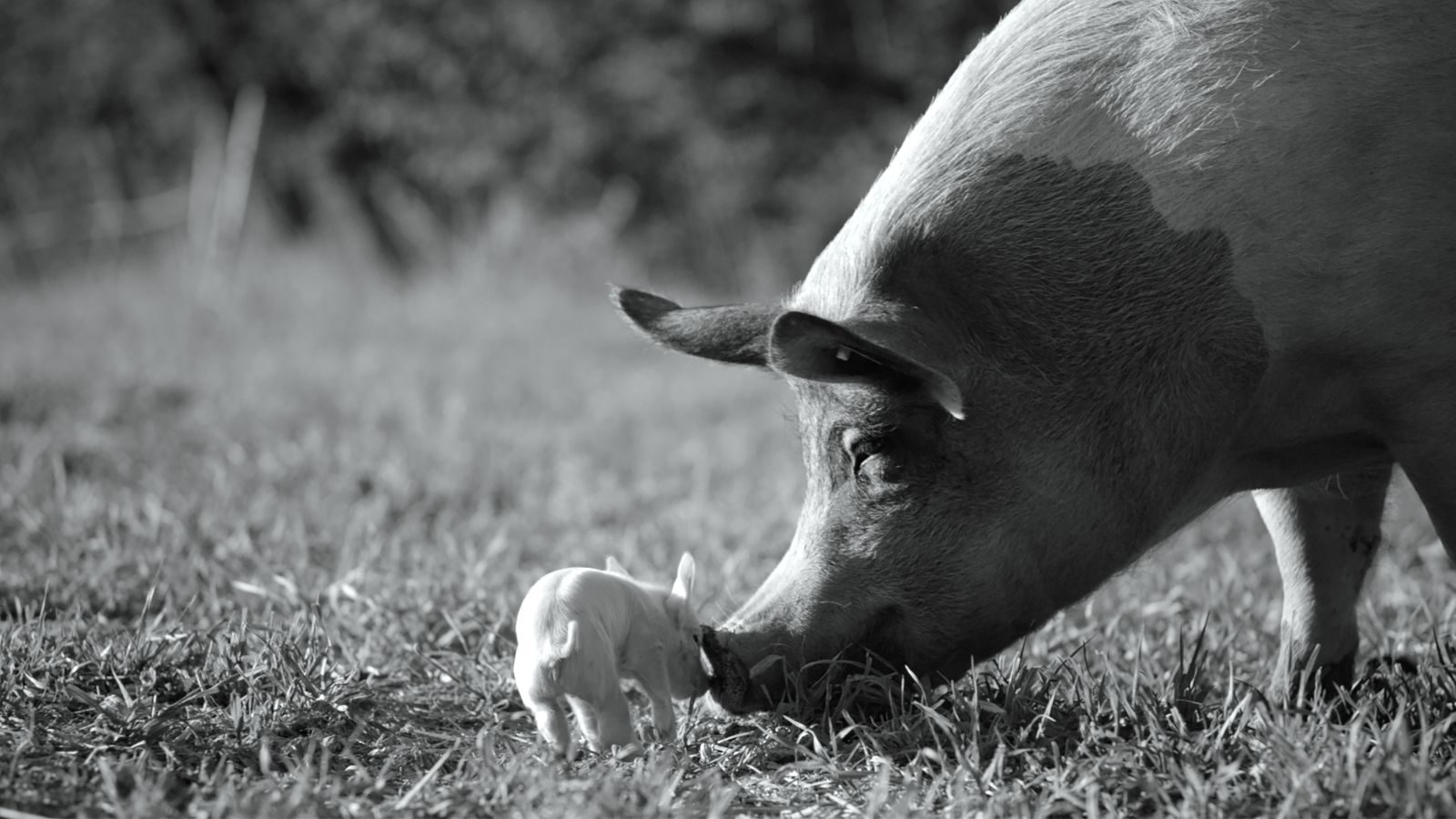It feels like we spend less time in awe at movies these days, cocking our collective head and murmuring or gasping, “How did they do that?” That lack of marveling is partly due to Marvel, at risk of putting too fine a point on it – not to single them out, but there’s a general sense, in film culture, that we know how everything is done, thanks to behind-the-scenes packages and DVD supplements and copious images of actors in front of green screens.
READ MORE: NYFF 2020: 12 Most Anticipated Films You Need See
Viktor Kosakovskiy’s “Gunda” is the first movie in years that prompted, for this viewer at least, that kind of thunderstruck amazement, because you cannot shrug its effects and achievements off to advances in CGI. There’s a scene early on where several tiny piglets are fighting over their mother’s nipples at feeding time, and the clarity of the images are astonishing; you can see every tiny detail, and as a result, the scene has the immediacy and urgency of great drama. “Gunda” is full of moments like that, during which even the savviest viewer may wonder how they got this close, and how they captured these moments without disrupting them.
There is not one human character in Kosakovskiy’s documentary, and not one word of dialogue or narration. He simply documents the daily life of these pigs, as well as some chickens and cows; it seems flip to use the phrase “fly on the wall” for a movie where so much of the soundtrack consists of flies near the mics, but here we are. He opens with a long, quiet, unbroken shot of the sow sleeping, a sleep disrupted by the slow appearance of her piglets. We watch chickens slowly, gingerly stepping out of their cage and exploring their wooded area in a tight, hesitant group, like teenagers going for a campout. And when a herd of cows runs through a field in slow motion, before coming to a fence, clumping up, and mooing in complaint – well, friends, that’s cinema.
READ MORE: 2020 Fall Film Preview: 40 Most Anticipated Films To Watch
The hands-off approach means capturing moments aplenty of intimacy and camaraderie; your mileage may vary, but this viewer can’t let go of the heartwarming image of two bulls, next to each other but facing opposite directions, using their tails to swat flies off each other. (The endless buzzing of those flies on the soundtrack is oddly soothing, a kind of barnyard ASMR.)
A moment like that doesn’t just tumble in front of the camera, and high praise is due to Kosakovskiy, and the time he’s willing to take to get it. “Gunda” is a film that stops and watches, patiently, and requires the same patience and attentiveness of the viewer – this is not a slab of content, to be watched while scrolling. It’s one of those movies that’s so deliberate and precise in its rhythms that, before like, you’ve fallen into them yourself; it’s all so muted and mellow that the rainstorm that hits the farm about an hour in feels, by that point, like a nuclear attack.
READ MORE: 2020 Fall TV Preview: 45 Shows To Watch
The picture’s primary asset is its crisp black and white photography (the cinematography is by Kosakovskiy and Egil Håskjold Larsen), which is striking enough to make it genuinely feel like a movie, and less like a BBC nature documentary. The graceful, elegant camera movements help as well, as does Kosakovskiy’s sure sense of composition; he will, on occasion, land on a frame of such offhand beauty and overwhelming peace, it’s breathtaking. (I’ve already read reviews comparing the film to fictional counterparts like “Babe” or “Charlotte’s Web,” but in terms of style, the closest proximity is the gorgeous and similarly calming sheep-herding documentary “Sweetgrass.”)
“Gunda” also gets a big boost from spending the bulk of the movie with the mama pig and her piglets, since piglets are inarguably adorable – good luck not emitting an audible “awww” as those sweet little guys trot alongside their big mother sow. And that is, perhaps, by design. We all know what these pigs are being raised for, and the executive producer credit for outspoken vegan Joaquin Phoenix indicates that there may be some messaging in play. But Kosakovskiy is no propagandist, even when he gets to the story’s conclusion, a ten-plus minute sequence of his main character just wandering and snorting sadly. It’s heart-crushing, moving, and beautiful, all at once, and that’s a pretty apt description of the film preceding it as well. [A]
Follow along with the rest of our 2020 New York Film Festival coverage here.





